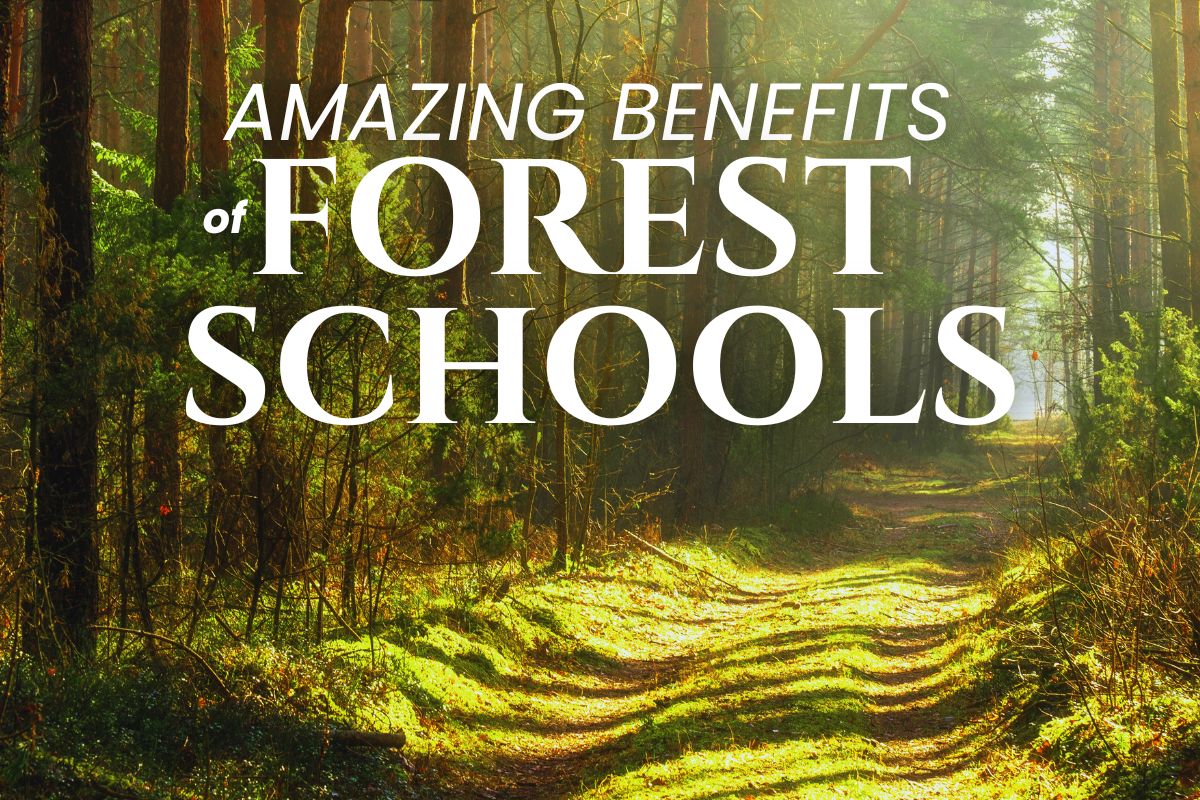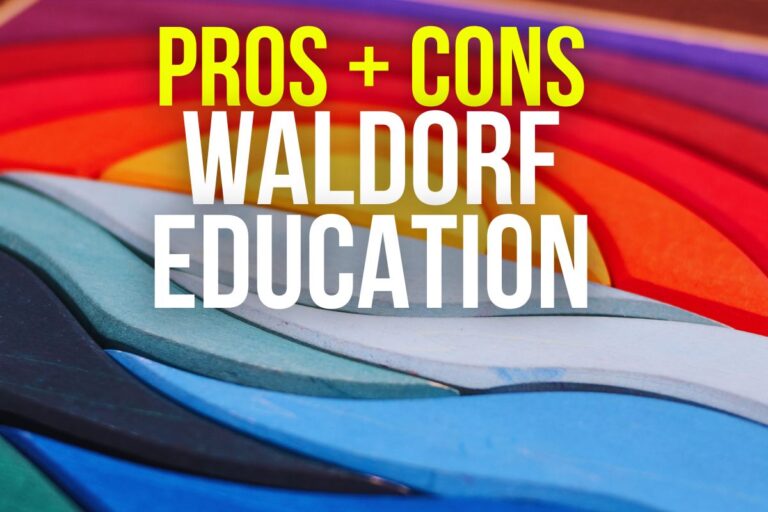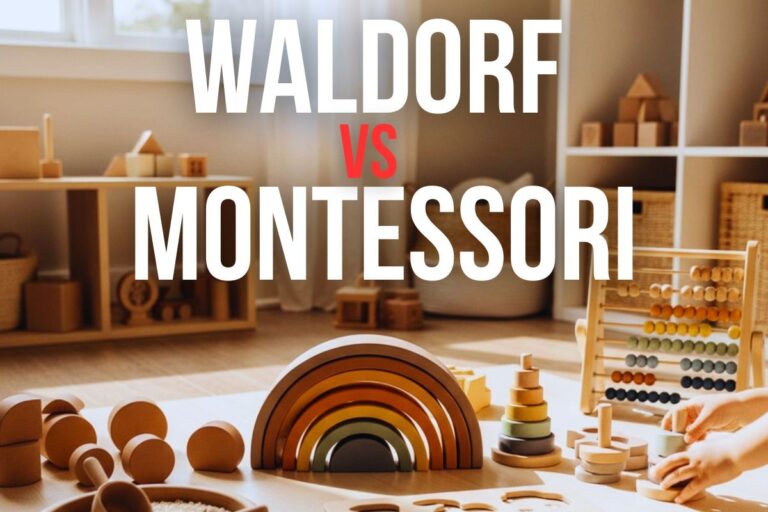9 Amazing Benefits of Forest Schools (+ Pros and Cons)
The Misfit Teacher contains affiliate links which means that if you make a purchase using one of these links, I may receive compensation at no extra cost to you. Read my disclaimer for more information.
If you’re wondering about the benefits of forest schools and want to know the pros and cons, then you’re in the right place.
I worked as a public school teacher for almost 10 years, and currently, my youngest child attends forest school full-time.
As both a teacher and a parent, I’m going to break down to you:
- Why forest schools are so amazing
- Why attending a forest school will help your kid RIGHT NOW (rather than overall implications, or just in 10-20 years down the line)
- What pros and cons of forest schools to keep in mind so that you go into it fully informed
So, let’s jump in – how forest schools benefit kids, and pros to cons to keep in mind when making your decision
9 Benefits of Forest Schools
1. It strengthens kids’ immune systems
Forest schools allow kids to be exposed to bacteria found in nature; it makes their immune systems stronger. And they get stronger quite quickly – a study in Finland showed that even just a month in nature was enough to drastically improve kids immunity!
Humans evolved to spend time outdoors, being exposed to diverse microbes found in nature.
Being outside in the open air for all (or most) of the day also means that illnesses don’t spread as much as they do indoors. So in other words, your child will probably get sick less frequently in forest school than in a regular public school.
2. It improves their mental health and emotional regulation
Humans were meant to be surrounded by plants; its in our DNA – that’s why we’re happier and calmer when we can see plants. And the more plants we can see and be around, the better.
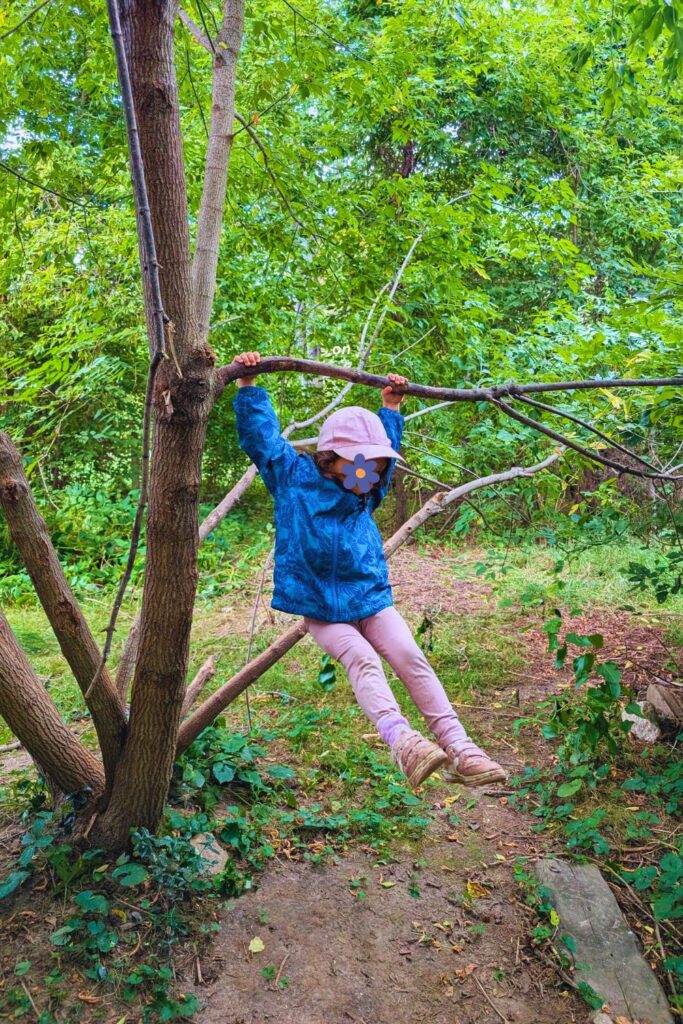
Studies have shown that even just having a plant in your office is beneficial for your mood, productivity, mental health and overall well-being – so imagine how good it is for kids to be surrounded by forest for a good chunk of the day.
Kids in forest schools are getting not just a plant in the room, or a tree at a playground – they get to be surrounded by the natural world, which does wonders for their curiosity, imagination, and mental health.
3. They get more exercise
Kids in forest schools tend to be a lot more active. They’re moving around, running, and climbing. They’re allowed to do things that normally aren’t allowed when you’re inside a public school.
I can’t tell you how many times I had to remind kids to ‘not run’ inside the school, because those were the rules. But, in a forest school, kids can really be kids and move around the way they were meant to.
I was worried at first when I heard that my kindergartener would be having a 1-hour rest time every day at her forest school.
But it turned out to be fine. She has a nap at forest school, and still often falls asleep at 7pm. Because kids tend to be a lot more active than if they were just at a regular school, they have the capacity for extra rest.
4. It encourages more risky play
Risky play may sound like a negative thing, but in the long run, being able to take some risks in the physical world is much healthier for your child than an intense focus on safety regulations.
Studies have been proving that children who didn’t take risks as kids have higher rates of anxiety in their teens and adulthood.
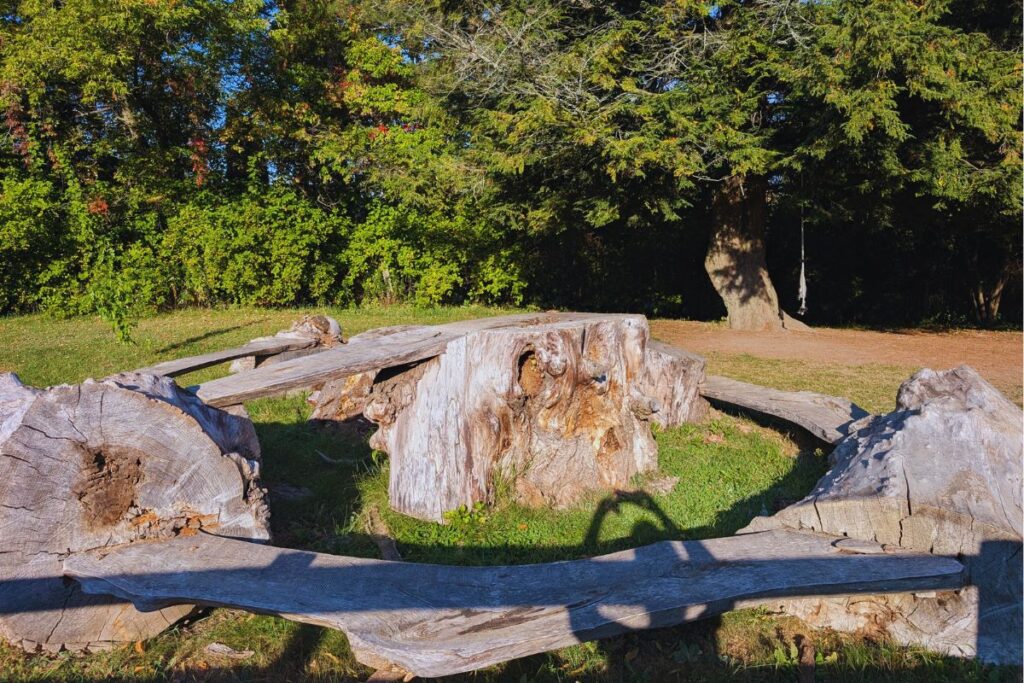
At her forest school, my daughter is allowed to climb trees, play with snow, run – you name it. These are things that are often discouraged the local public schools where we live.
It’s become common in many societies to prevent any injuries at all cost, and to avoid having them experience disappointment or other negative emotions. But really, these kinds of things build resiliency and lead to a stronger child who knows how to cope and use their body in the natural world.
5. There’s a larger focus on free play and play-based learning
Forest schools have a higher focus on free-play than public schools do; at least in North America.
Free play (or play-based learning) may not sound like something super academic, but it’s actually been proven to be a more beneficial in young child development than a more academic setting at a desk.
Play-based learning/free play build a better foundation for imagination, creativity and critical thinking – which are skills that you most need to get ahead in life. You can read about why its so beneficial here.
When I visited my daughter’s forest school, one thing that stuck out to me as so different from a public school setting is how little the teachers guided, instructed, corrected, intervened – the kids seemed more independent to play, and use their imaginations – than how we let them be in a public school.
6. It strengthens their connection to nature
The only way to have a connection with nature is to spend time in it. That’s when you notice all of the things that are so amazing about it.
Bonus: Forest schools have a positive impact on the planet. It’s hard to want to protect nature if you have no connection or appreciation for it. Studies have found that people who later in life went on to become environmental stewards were often people who had a strong connection to nature as children
7. You can learn anything outside
I attended a workshop on outdoor education as a teacher, where we were taught how we could teach any subject in the woods – math, science, music, art – you name it.
Canadian school boards had realized that nature was so important in a child’s learning and development, and they provided these workshops for us teachers to help us bring our lessons outside.
The problem wasn’t that we didn’t want to bring the learning outside, but that its much harder to do that in a building built on land that was mowed and plowed down in order to plop the school and a subdivision with hundreds or thousands of houses.
In the typical school in southern Ontario, there’s very little forest or natural areas nearby. It’s just so out of reach.
So, while I think most educational institutions realize that outdoor education is vital, it’s hard to really get that experience unless you’re at a real forest school that has access to real forests.
8. You’ll realize that toys and electronics can be overrated
Overconsumption is a common, normalized thing in North America. Kids have more toys and electronics than they know what to do with – and most of it goes to landfill (don’t get me started on that.)
But from being in a forest school, my daughter is used to making fun out of practically nothing. I’ve seen how she can be entertained by a rock, a stick, a small bug, or watching birds. She notices things like the shapes in the clouds, and how they look like other things.
9. Drop-offs and pick-ups may be much less stressful than at a regular school
Overall, dropping your child off at a forest school is going to be a less stressful, less hectic experience than navigating how busy regular school parking lots and drop-off areas have become.
I drive up a dirt road, and don’t have to look for a parking spot. I love the environment of the outside of the school; the wind chimes, the fire they make on cool mornings. It’s very calming, even just for those few minutes before I head home.
Pros and Cons of Forest Schools (Things to Consider)
I would 100% recommend a forest school to anyone, but I believe in showing you both sides of the coin; the pros and cons of forest schools to keep in mind before seriously considering it. Keep in mind with all of these pros and cons – it depends on the school. Forest schools vary by the time of school, and how they’re run. So you should always look into the forest school in your area, and what the rules are to get an idea of what your child’s experience there will be like.
Pros to Forest Schools
-Improved mental health and emotional regulation
-More physical activity
-Exposure to germs, and hence a stronger immune system. (They’ll get sick much less than in a regular school!)
–Connection to nature, being able to find wonder and appreciation in the natural world
–More free play, fostering of imagination and creativity; life long skills that will help them right now and in many areas going forward
–Lower key, smaller and less stimulating and stressful than a typical school environment
Cons of Forest Schools
-Tuition cost. Depending on where you live, forest schools are often privately owned and managed, which means you’ll likely need to pay out of pocket. This is hard and sometimes undoable for some families
-All the gear you need to buy. If you live in a colder climate (like we do) you’ll need to make sure you’ve invested in the outdoor gear your child will need to really enjoy and express themselves freely in the outdoors. Fully waterproof gear, etc. Of course, I think its worth it – but, it is another investment you need to make
–A 100% outdoor school may be a huge (and uncomfortable) adjustment for some kids who aren’t used to it, or don’t already love being outside. Forest schools vary in how much time is really spent outdoors. Some of them are 100%, and others are just partial.
-Since forest schools are focused on more ‘natural’ and non-mainstream, they may attract an anti-vax clientele. Some forest schools even go as far as promoting an anti-vax sentiment. (Ours doesn’t luckily.) But, we have seen anti-vax stickers on bumper cars at our forest school.
Most of the downsides to forest school come down to being related to the costs and potential inconveniences of travelling to them. As a single mom and teacher, I didn’t have the money or the time availability for the drop-off/pick-up hours of the forest school. Now, as a self-employed with more freedom, I feel so fortunate to be able to do this for my youngest child and I hope that it can be something that becomes more assessible to all families.
Final Thoughts on Forest School Benefits
I hope that this article showed you all the ways that forest schools can be amazing for your child. There are so many benefits to forest schools, because being immersed in biodiversity daily can do wonders for a child’s developing mind.
Forest schools come in different shapes and sizes – some are Waldorf, some Montessori or Reggio; others might simply be a forest school where standard learning curriculum in your province or state happens mainly outdoors. So, look into what forest schools are in your area and see what the learning environment looks lile.
